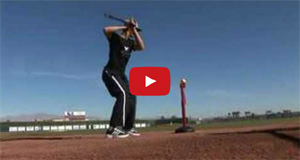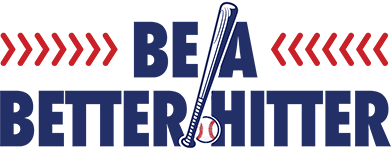The Power In Your Legs

If you don’t move forward you got a lot more power in your legs. You should feel your legs. How about a little more flexing with your lower half. Do it. Get down, little bit more. Little more, there ya go. No get back. Alright. Now have no flexion with your legs, none whatsoever, and try to keep your weight back when you stride forward. No flexion. You can’t do it can you?
So if you were going to err one way or the other, would you have little or no flexion, or too much flexion? Yea, but stay tall from the waist up. If you want to keep your weight and your hands working together. More flexion, there you go. Get down there. You moved forward. That’s alright though, but it’s a lot better. I got a feeling as though you felt your backside a little bit more too.
More flexion, get down there, get down. Head up, now stay there with your head still. Stay there, stay there. You can have all the movement you want with everything else, keep your head still. That’s alright, you moved forward. And if your head moves forward what do you think you’re doing with the back, what’s probably going to happen? If you’re moving forward whats’ your back going to do? Are you gonna be here or ya gonna be there? That’s right. Now where did that ball go right there? And you missed where? You didn’t hit it square, you didn’t hit center, so you missed it just a little bit, it was probably from the bottom right? Keep your head still, you work down to the ball. There you go. That ball’s crushed right there. Stay behind it, and get there, now just a little bit. That’s alright though. That’s a lot better with your backside, you got a little torque now. Ah. Do you feel as though you got your weight and your hands through together, got your whole body? Now that’s power.
Power is timing and location and getting your weight and your hands coming through together. It’s not really about anything else. You’re working together, your whole body, and you’re getting your pitch, and you’re taking your swing, understand what the swing does in the strike zone. That’s what you’re looking for right? That’s the pitch that you hit best. Yeah. Should have been only the pitch that you want to hit until you got the two strikes. If you’re swinging at anything other than the pitch you want to hit and the location that you wanted it then you’re not ready to hit.
You got yourself out, the pitcher didn’t do it. It happens, but I mean that’s what you look for, that’s a good at bat. They say good contact, hit it hard.. no it’s not. Take your swing and the pitch you’re looking for every time all the time and that is a good at bat. Anything else is a waste of time. And that you have control of. You don’t have control of where the ball goes, how well you hit the ball. Your swing on the pitch that you want to hit. And then when you’re really going good, it’s the location that you want.
Are you a low ball hitter? Probably because you have a little movement forward so your swing is a little longer that it should be. And if you had worked on staying behind the ball and keeping your head still you could hit anywhere in the strike zone. That’s all you gotta do. Don’t even have to hit a breaking ball to get to the big leagues. All you gotta do it quit on the bad ones. And that’s easier said than done. But if you quit on the bad one you’ll get a fast ball to hit because you’re not gonna get over and over a guy that has mediocre command of the breaking ball, keeps throwing it over and over to walk you.
When people get on base you’re 90 feet closer to scoring. That’s your objective offensively right? Nobody’s on, you get on. Somebody’s on, you move him. Runner in scoring position, drive him in. What do you got to do to do that? What do you got to do to hit the ball? Get your pitch, take your swing. That’s all. Simple game.

i am a 16 year old working to be a consistent baseball hitter